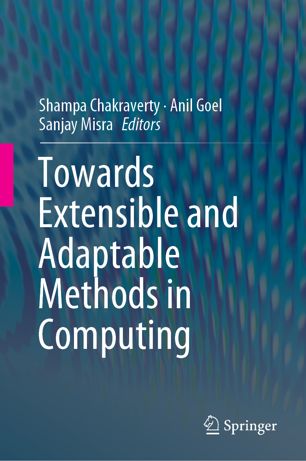

Most ebook files are in PDF format, so you can easily read them using various software such as Foxit Reader or directly on the Google Chrome browser.
Some ebook files are released by publishers in other formats such as .awz, .mobi, .epub, .fb2, etc. You may need to install specific software to read these formats on mobile/PC, such as Calibre.
Please read the tutorial at this link: https://ebookbell.com/faq
We offer FREE conversion to the popular formats you request; however, this may take some time. Therefore, right after payment, please email us, and we will try to provide the service as quickly as possible.
For some exceptional file formats or broken links (if any), please refrain from opening any disputes. Instead, email us first, and we will try to assist within a maximum of 6 hours.
EbookBell Team

4.3
8 reviewsThis book addresses extensible and adaptable computing, a broad range of methods and techniques used to systematically tackle the future growth of systems and respond proactively and seamlessly to change. The book is divided into five main sections: Agile Software Development, Data Management, Web Intelligence, Machine Learning and Computing in Education. These sub-domains of computing work together in mutually complementary ways to build systems and applications that scale well, and which can successfully meet the demands of changing times and contexts. The topics under each track have been carefully selected to highlight certain qualitative aspects of applications and systems, such as scalability, flexibility, integration, efficiency and context awareness.
The first section (Agile Software Development) includes six contributions that address related issues, including risk management, test case prioritization and tools, open source software reliability and predicting the change proneness of software. The second section (Data Management) includes discussions on myriad issues, such as extending database caches using solid-state devices, efficient data transmission, healthcare applications and data security. In turn, the third section (Machine Learning) gathers papers that investigate ML algorithms and present their specific applications such as portfolio optimization, disruption classification and outlier detection. The fourth section (Web Intelligence) covers emerging applications such as metaphor detection, language identification and sentiment analysis, and brings to the fore web security issues such as fraud detection and trust/reputation systems. In closing, the fifth section (Computing in Education) focuses on various aspects of computer-aided pedagogical methods.